
- HOME
- PERSONAL
- TV & VIDEO PRODUCTION
- PHOTOGRAPHY
- PORTFOLIO
- SINGLES
- RATES
| New Valamo, a Living Monastic Tradition in Finland | Page: 1 | |

FINLAND, Papinniemi
The Finnish monastery of the Transfiguration of Christ has been located at Papinniemi, between Kopio and Joensuu, since 1940. The monastery has its centuries old roots in the island of Valamo in Lake Ladoga, in the territories ceded to the Soviet Union after the Second World War.
© 2008 Peter Williams

FINLAND, Papinniemi
The Finnish monastery of the Transfiguration of Christ has been located at Papinniemi, between Kopio and Joensuu, since 1940.
© 2008 Peter Williams
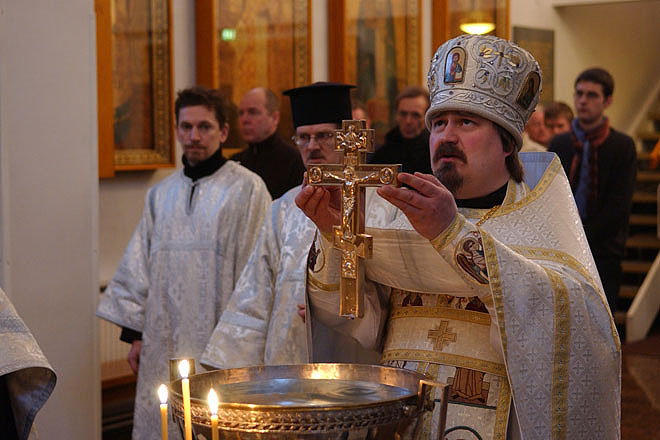
FINLAND, Papinniemi
The Blessing of Waters is normally done twice: once on Paramony, the eve of Epiphany inside the church, and then again on the day of the feast, outdoors at a body of water.
© 2008 Peter Williams

FINLAND, Papinniemi
Vespers on Paramony, the eve of Epiphany.
The Finnish monastery of the Transfiguration of Christ has been located at Papinniemi, between Kopio and Joensuu, since 1940. The monastery has its centuries old roots in the island of Valamo in Lake Ladoga, in the territories ceded to the Soviet Union after the Second World War.
© 2008 Peter Williams

FINLAND, Papinniemi
A believer lighting candles during the vespers on Paramony, the eve of Epiphany.
The Finnish monastery of the Transfiguration of Christ has been located at Papinniemi, between Kopio and Joensuu, since 1940. The monastery has its centuries old roots in the island of Valamo in Lake Ladoga, in the territories ceded to the Soviet Union after the Second World War.
© 2008 Peter Williams

FINLAND, Papinniemi
The Valamo icon conservation laboratory is one of the most modern of its kind.
The Finnish monastery of the Transfiguration of Christ has been located at Papinniemi, between Kopio and Joensuu, since 1940. The monastery has its centuries old roots in the island of Valamo in Lake Ladoga, in the territories ceded to the Soviet Union after the Second World War.
© 2008 Peter Williams

FINLAND, Papinniemi
In Finland, the winters are often severe with only a few hours of daylight.
The Finnish monastery of the Transfiguration of Christ has been located at Papinniemi, between Kopio and Joensuu, since 1940. The monastery has its centuries old roots in the island of Valamo in Lake Ladoga, in the territories ceded to the Soviet Union after the Second World War.
© 2008 Peter Williams

FINLAND, Papinniemi
The Finnish monastery of the Transfiguration of Christ has been located at Papinniemi, between Kopio and Joensuu, since 1940. The monastery has its centuries old roots in the island of Valamo in Lake Ladoga, in the territories ceded to the Soviet Union after the Second World War.
© 2008 Peter Williams

FINLAND, Papinniemi
The Finnish monastery of the Transfiguration of Christ has been located at Papinniemi, between Kopio and Joensuu, since 1940. The monastery has its centuries old roots in the island of Valamo in Lake Ladoga, in the territories ceded to the Soviet Union after the Second World War.
The Monastery’s principle source of income nowadays is tourism. It welcomes more than 160,000 visitors a year, most of them during the summer months.
© 2008 Peter Williams
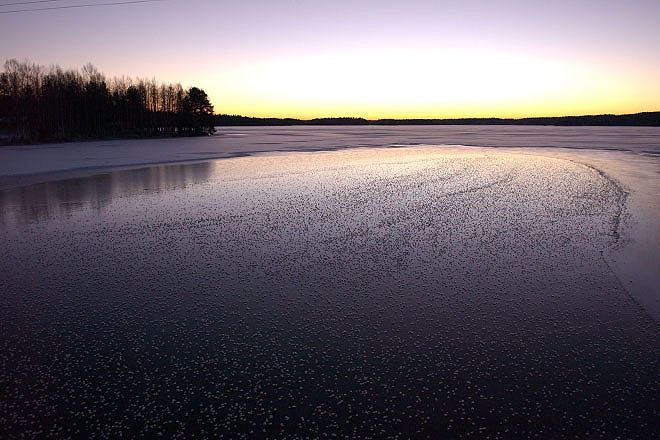
FINLAND, Papinniemi
In Finland, the winters are severe with only a few hours of daylight.
© 2008 Peter Williams
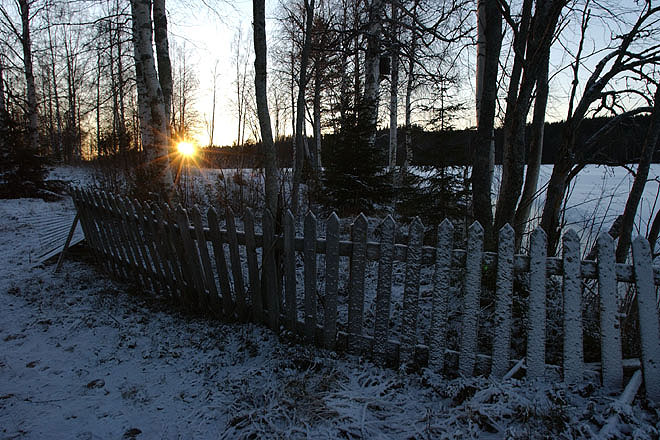
FINLAND, Papinniemi
Surrounded by forests and lakes the Finnish monastery of the Transfiguration of Christ has been located at Papinniemi, between Kopio and Joensuu, since 1940. The monastery has its centuries old roots in the island of Valamo in Lake Ladoga, in the territories ceded to the Soviet Union after the Second World War.
© 2008 Peter Williams

FINLAND, Papinniemi
At the end of the feast of Epiphany the sun sets over the frozen lake.
© 2008 Peter Williams
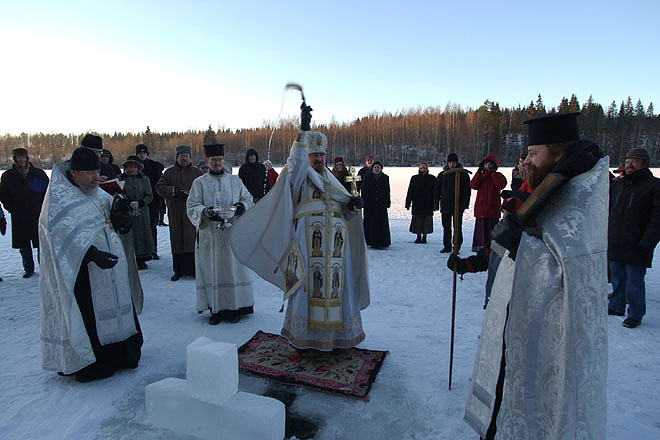
FINLAND, Papinniemi
The solemn Blessing of Waters on the feast of Epiphany, commemorating Christ’s baptism in the River Jordan, is one of the most imposing ceremonies of the Byzantine Rite.
After the ceremony the priest blesses the congregation using water.
© 2008 Peter Williams

FINLAND, Papinniemi
The solemn Blessing of Waters on the feast of Epiphany, commemorating Christ’s baptism in the River Jordan, is one of the most imposing ceremonies of the Byzantine Rite.
The cross is put into the water to bless and purify the waters.
© 2008 Peter Williams
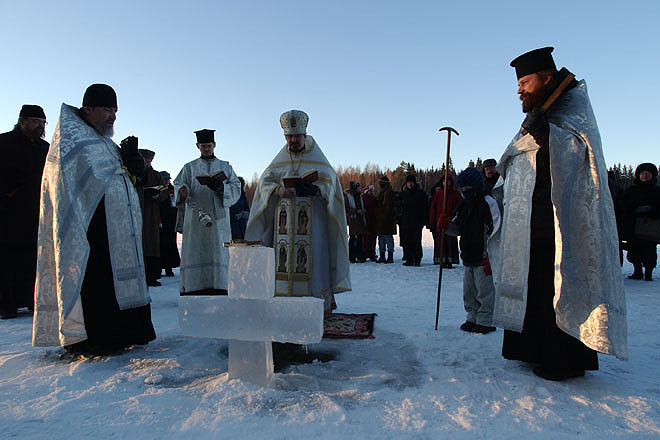
FINLAND, Papinniemi
The solemn Blessing of Waters on the feast of Epiphany, commemorating Christ’s baptism in the River Jordan, is one of the most imposing ceremonies of the Byzantine Rite.
In Finland, where the winters are severe, a hole is cut into the ice so that the water may be blessed.
© 2008 Peter Williams

FINLAND, Papinniemi
The procession gathers on the frozen lake for the Blessing of Waters.
The solemn Blessing of Waters on the feast of Epiphany, commemorating Christ’s baptism in the River Jordan, is one of the most imposing ceremonies of the Byzantine Rite.
© 2008 Peter Williams
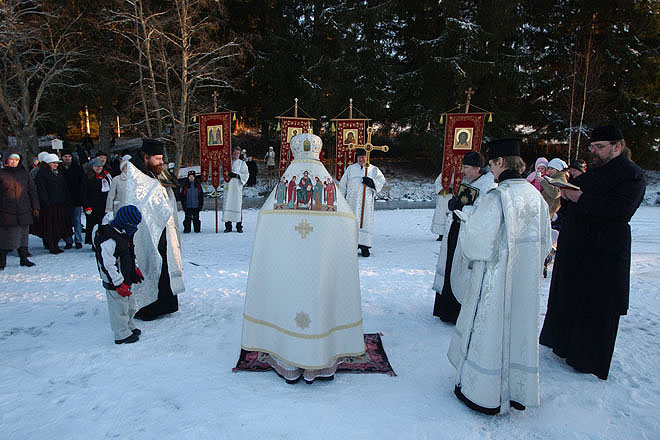
FINLAND, Papinniemi
The procession gathers on the frozen lake for the Blessing of Waters.
The solemn Blessing of Waters on the feast of Epiphany, commemorating Christ’s baptism in the River Jordan, is one of the most imposing ceremonies of the Byzantine Rite.
© 2008 Peter Williams
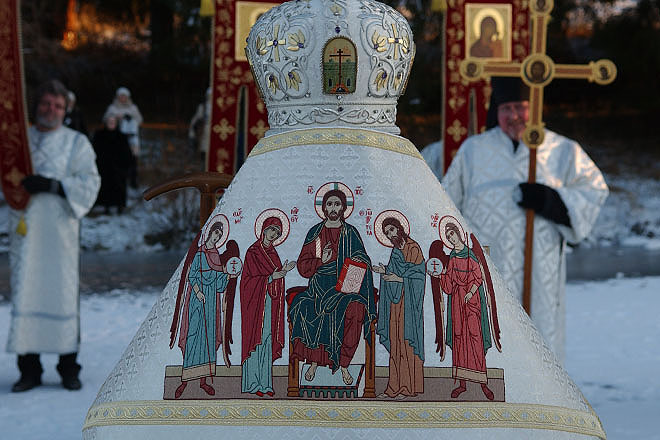
FINLAND, Papinniemi
The procession gathers on the frozen lake for the Blessing of Waters.
The solemn Blessing of Waters on the feast of Epiphany, commemorating Christ’s baptism in the River Jordan, is one of the most imposing ceremonies of the Byzantine Rite.
© 2008 Peter Williams
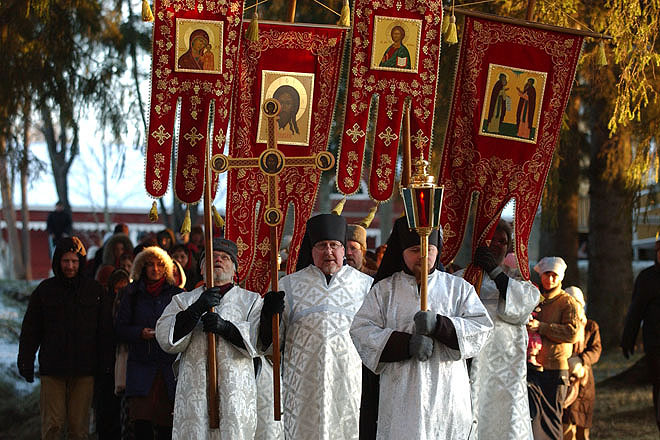
FINLAND, Papinniemi
Following the liturgy the procession makes its way to the nearby lake for the Blessing of Waters.
The solemn Blessing of Waters on the feast of Epiphany, commemorating Christ’s baptism in the River Jordan, is one of the most imposing ceremonies of the Byzantine Rite.
© 2008 Peter Williams

FINLAND, Papinniemi
Following the liturgy the procession makes its way to the nearby lake for the Blessing of Waters.
The solemn Blessing of Waters on the feast of Epiphany, commemorating Christ’s baptism in the River Jordan, is one of the most imposing ceremonies of the Byzantine Rite.
© 2008 Peter Williams



















